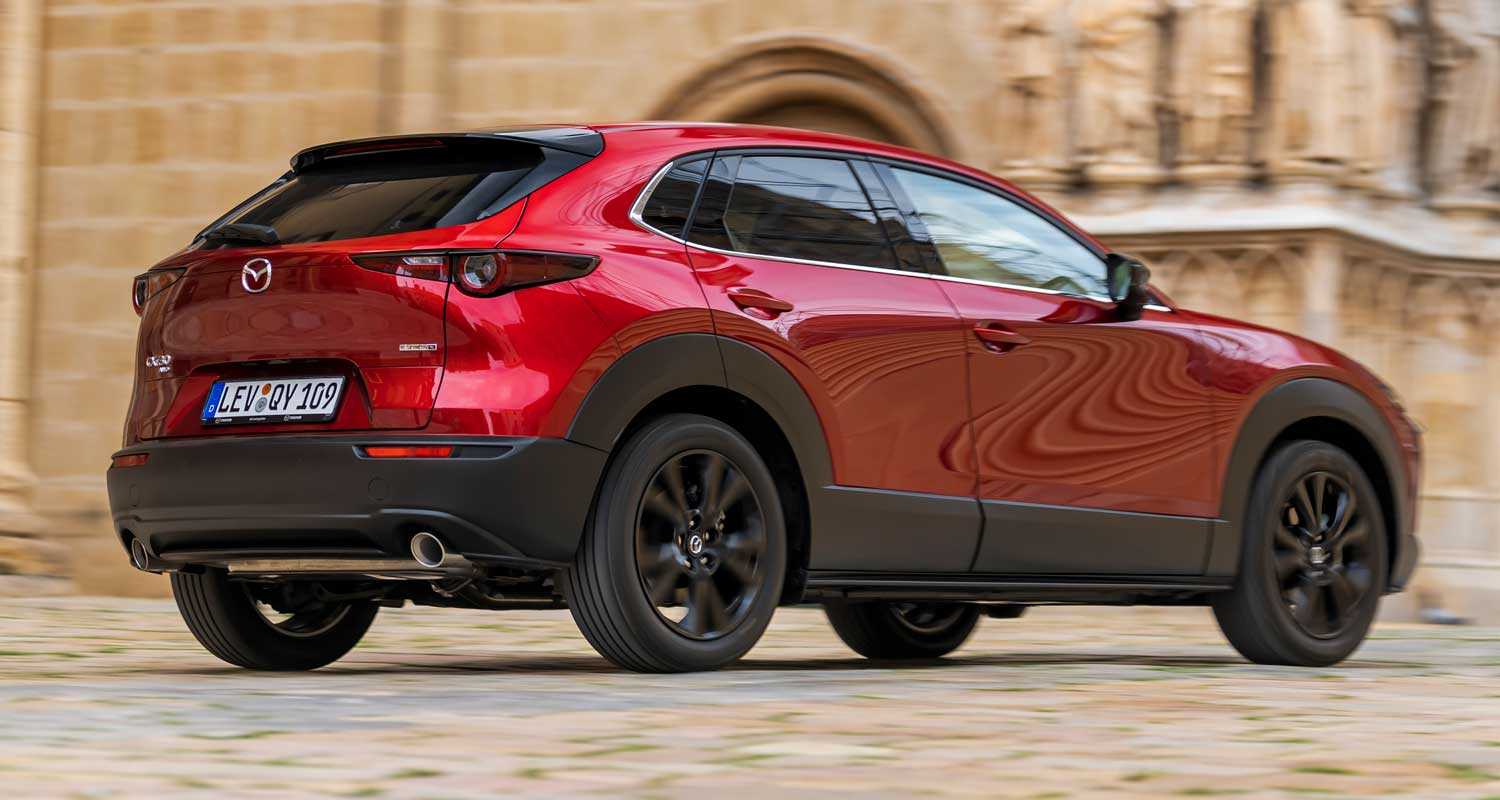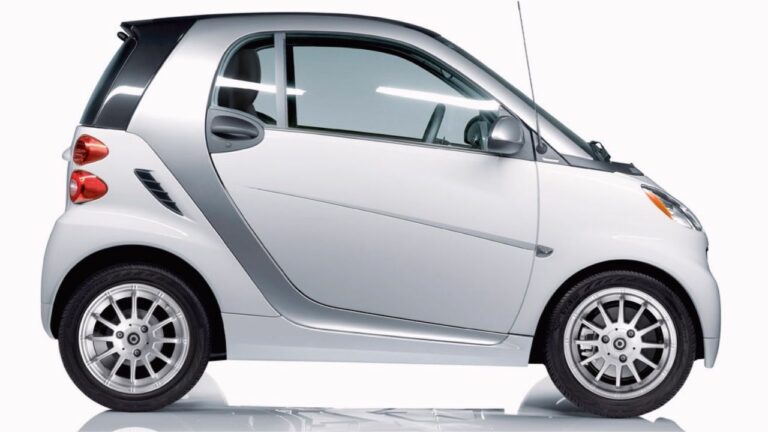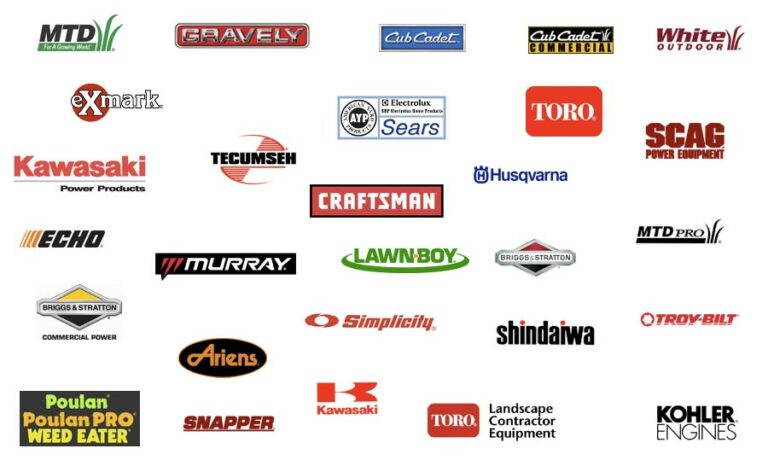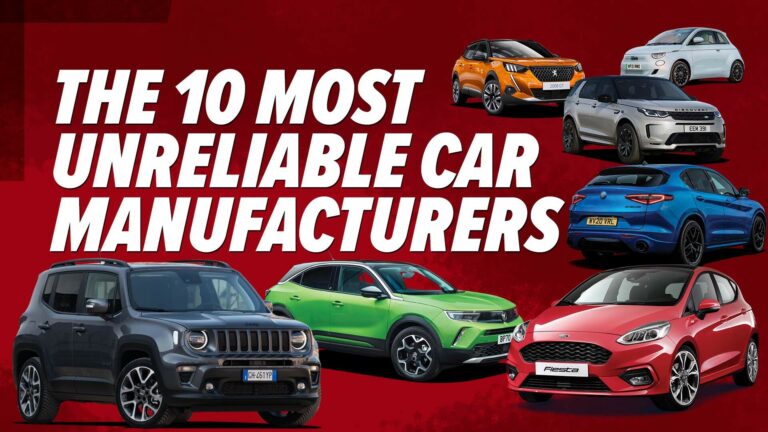Mazda Motor Corporation Car Brands: A Deep Dive into a Singular Vision
Mazda Motor Corporation Car Brands: A Deep Dive into a Singular Vision cars.truckstrend.com
In the vast and often complex landscape of the global automotive industry, where massive conglomerates like Stellantis, General Motors, and Volkswagen Group manage a dizzying array of distinct car brands, Mazda Motor Corporation stands as a fascinating anomaly. Unlike its multi-brand peers, Mazda largely operates under a single, globally recognized brand: Mazda. This singular focus is not a limitation but a deliberate strategic choice, allowing the company to forge an exceptionally cohesive and unique identity centered on driving pleasure, exquisite design, and innovative engineering.
This article will delve into the essence of Mazda Motor Corporation’s car brands, exploring its steadfast commitment to its core identity, its intriguing historical ventures into sub-brands, and how its current model lineup effectively serves diverse market segments while upholding a unified brand promise. We will uncover what truly defines a Mazda vehicle and offer practical insights for those considering joining the Mazda family.
Mazda Motor Corporation Car Brands: A Deep Dive into a Singular Vision
The Core Identity: The Unwavering Mazda Brand Philosophy
At the heart of Mazda’s brand strategy lies a profound commitment to a set of core philosophies that permeate every aspect of its vehicle development. These aren’t just marketing slogans; they are the guiding principles that define the Mazda driving and ownership experience.
-
Jinba Ittai: The Horse and Rider as One: This Japanese concept is the cornerstone of Mazda’s dynamic philosophy. It embodies the intuitive connection between the driver and the car, aiming for a seamless, natural extension of the driver’s will. This translates into vehicles with exceptionally communicative steering, balanced chassis, and responsive powertrains, making every drive engaging and enjoyable, regardless of the model. It’s about confidence, control, and a sense of unity with the machine.
-
Kodo Design: Soul of Motion: Mazda’s distinctive design language, "Kodo," is more than just aesthetics; it’s about capturing a sense of vitality and movement, even when the vehicle is stationary. Characterized by elegant lines, sculpted surfaces, and a minimalist approach, Kodo design creates a powerful visual presence that is both sophisticated and timeless. It emphasizes light and shadow, creating a dynamic interplay that makes each Mazda vehicle instantly recognizable and aesthetically pleasing. The goal is to evoke emotion and bring the car to life.
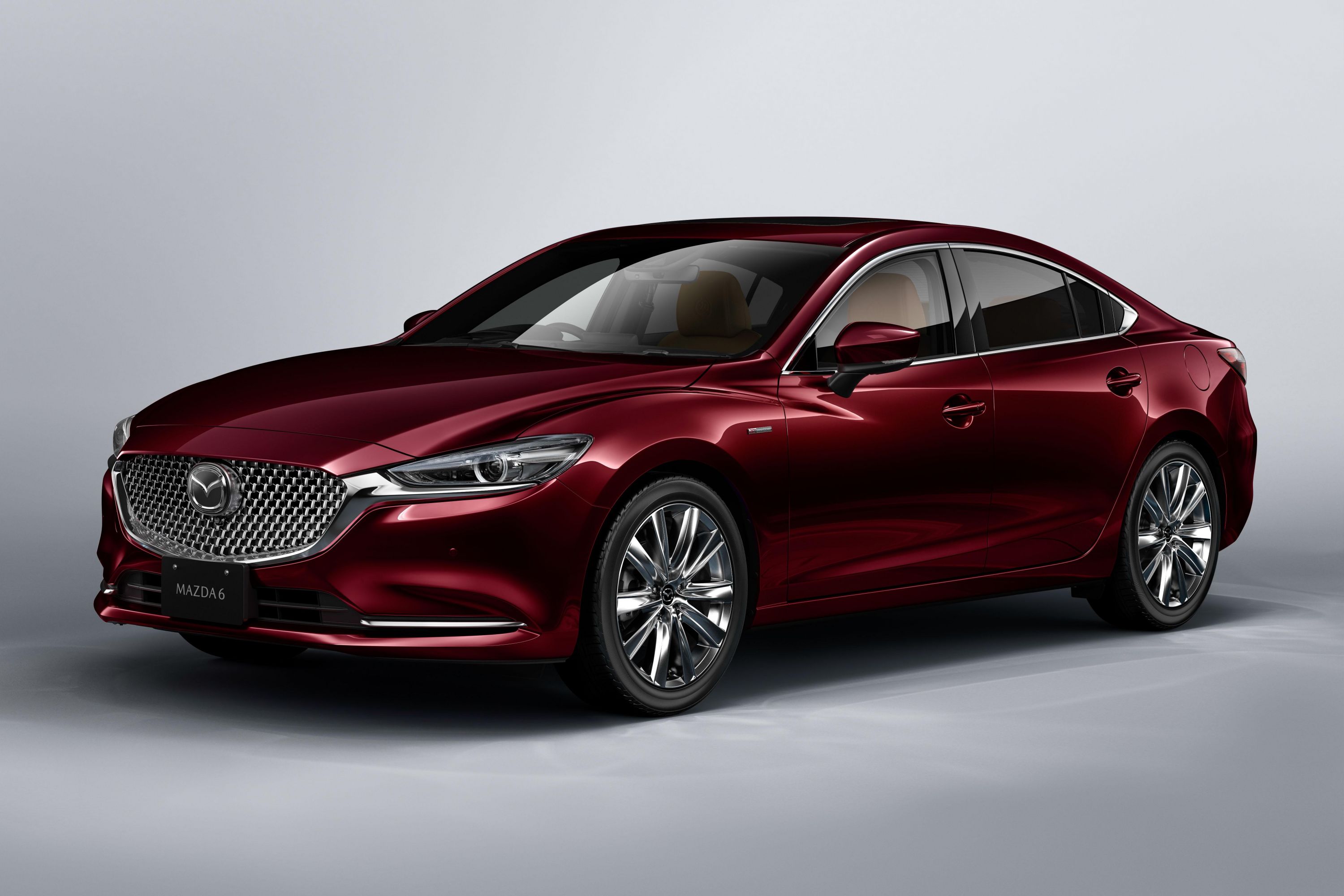
-
Skyactiv Technology: Efficiency Without Compromise: This comprehensive suite of technologies encompasses engines, transmissions, chassis, and body structures, all engineered from the ground up to maximize efficiency, performance, and safety. Unlike many manufacturers who rely heavily on turbocharging to boost power, Mazda initially focused on naturally aspirated engines with exceptionally high compression ratios, aiming for a more linear and satisfying power delivery. Skyactiv also prioritizes lightweight construction and optimal weight distribution, contributing directly to the Jinba Ittai driving experience and enhancing fuel economy without sacrificing power or safety. More recently, Skyactiv has expanded to include electrification, with mild-hybrid, plug-in hybrid, and battery-electric powertrains integrating seamlessly into the Mazda philosophy.
:quality(70)/cloudfront-us-east-1.images.arcpublishing.com/metroworldnews/TXHBZZZW5VAPJHWDGK3FO56LKA.jpg)
These three pillars collectively define the Mazda brand, ensuring that every vehicle bearing the Mazda badge delivers a consistent and unique value proposition: an engaging driving experience, captivating design, and intelligent engineering that prioritizes the driver.
A Look Back: Mazda’s Foray into Multi-Branding (Historical Perspective)
While Mazda predominantly operates as a single brand today, there was a period, primarily during Japan’s "bubble economy" of the late 1980s and early 1990s, when the company experimented with a multi-brand strategy. This ambitious venture aimed to expand its market reach and cater to diverse customer segments through distinct sales channels and brand identities within Japan.

Eunos (1989-1996): Positioned as a sporty and premium brand, Eunos offered vehicles with enhanced features and a more luxurious feel. Its most famous product was the Eunos Roadster (the Japanese market MX-5 Miata), but it also included models like the Eunos Cosmo (a technologically advanced, rotary-powered luxury coupe) and the Eunos 500 (a compact executive sedan).
-
Xedos (1992-1999): Xedos was Mazda’s attempt at a full-fledged luxury brand, aiming to compete directly with established premium marques like Lexus, Infiniti, and Acura. Its lineup included the Xedos 6 (Mazda 626-based compact executive car) and the flagship Xedos 9 (Mazda Millenia in North America), known for its innovative Miller cycle engine.
-
Autozam (1990-1998): At the other end of the spectrum, Autozam focused on smaller, more affordable vehicles, including Kei cars and subcompacts. It was a partnership with Suzuki and also offered quirky models like the Autozam AZ-1, a mid-engined Kei sports car.
-
ɛfini (Efini) (1991-1997): This brand was positioned for sporty and performance-oriented vehicles, including the iconic ɛfini RX-7 (third generation). It was intended to appeal to enthusiasts seeking a more direct and exciting driving experience.
These multi-brand ventures, while interesting in concept, ultimately proved unsustainable. The collapse of Japan’s bubble economy in the mid-1990s led to a severe economic downturn, forcing Mazda to consolidate its operations. The cost of maintaining separate sales channels, brand identities, and product development for these distinct brands became prohibitive. Furthermore, the market was not ready for such rapid brand proliferation, leading to confusion and brand dilution. Mazda learned a valuable lesson from this experience, reinforcing its belief in the power and clarity of a single, strong global brand.
The Modern Mazda Lineup: Diversity within a Unified Brand
Today, Mazda’s strategy is to offer a diverse range of vehicles that cater to various customer needs and preferences, all while remaining firmly under the unified Mazda brand. Each model, whether a compact sedan or a large SUV, embodies the core Mazda principles, offering a consistent brand experience.
-
The Sedan & Hatchback Stalwarts:
- Mazda3: Available as a stylish sedan or a sleek hatchback, the Mazda3 consistently punches above its weight in terms of interior quality, design, and driving dynamics. It offers a premium feel in the compact segment, appealing to those who prioritize driving enjoyment and sophisticated aesthetics.
- Mazda6: (Phased out in some markets, but an important part of recent history) This mid-size sedan was known for its elegant design, engaging driving characteristics, and upscale interior, often lauded as a driver’s alternative in a segment dominated by more utilitarian offerings.
-
The SUV Dominance: The CX-Series:
- CX-30: A subcompact crossover that blends the nimble handling of a car with the versatility of an SUV, featuring a striking design and premium interior.
- CX-5: Mazda’s best-selling model, the CX-5 is a compact SUV renowned for its engaging driving dynamics, refined interior, and elegant Kodo design, setting it apart from its utilitarian competitors.
- CX-50: Designed for more rugged adventures, the CX-50 is a slightly larger, more robust compact SUV that emphasizes off-road capability while retaining Mazda’s on-road refinement.
- CX-70 & CX-90: Representing Mazda’s significant push into the premium segment, these larger, wide-body SUVs are built on a new large platform with rear-wheel-drive biased architectures. They offer more powerful engine options (including inline-six and PHEV powertrains) and a heightened level of luxury and sophistication, signaling Mazda’s aspiration to compete with true premium brands.
- CX-9: (Phased out, replaced by CX-90) A three-row SUV that combined practicality with a surprisingly agile driving experience for its size.
-
The Icon: MX-5 Miata: The MX-5 Miata is a legend, embodying Jinba Ittai in its purest form. This lightweight, rear-wheel-drive roadster is celebrated worldwide for its perfectly balanced chassis, direct steering, and pure, unadulterated driving fun. It remains a testament to Mazda’s unwavering commitment to the driver.
-
The Electric Horizon: MX-30: Mazda’s first mass-produced electric vehicle (available in some markets as EV or PHEV), the MX-30, showcases Mazda’s unique approach to electrification, prioritizing urban usability and a refined driving experience while maintaining the brand’s design philosophy. It represents Mazda’s step into the future of mobility.
Understanding the Mazda Brand’s Appeal and Value Proposition
Mazda occupies a unique niche in the automotive market. It consistently offers vehicles that feel more premium, drive more engagingly, and are designed more beautifully than their mainstream competitors, often at a price point that undercuts traditional luxury brands.
- Premium Aspirations without the Premium Price Tag: Mazda vehicles offer an upscale interior, high-quality materials, and sophisticated design that often rival vehicles costing significantly more. While not a "luxury brand" in the traditional sense, it aims for a "premium mainstream" position, appealing to buyers who appreciate refinement and craftsmanship without paying for a luxury badge.
- Unparalleled Driving Dynamics: For those who value the act of driving, Mazda is a standout. The Jinba Ittai philosophy translates into cars that are genuinely fun to drive, offering a level of engagement often missing in their segments.
- Design Excellence: Mazda’s Kodo design language ensures its vehicles consistently look fresh, elegant, and distinctive, standing out in a crowded market.
- Quality and Reliability: Mazda consistently ranks high in reliability surveys, demonstrating a strong commitment to build quality and durability.
Potential Challenges for the Mazda Brand:
- Market Share: As a smaller automaker, competing with giants can be challenging in terms of marketing budgets and sheer volume.
- EV Transition: While Mazda is committed to electrification, its initial EV offerings have been limited, and it faces stiff competition from established EV players.
- Brand Perception Gap: Convincing mainstream buyers that Mazda offers a "premium" experience without the traditional luxury badge can be a marketing challenge.
Practical Advice for Choosing a Mazda
If you’re drawn to Mazda’s unique philosophy, here’s some practical advice for selecting the right model:
-
Define Your Needs:
- Space & Utility: For families or those needing cargo room, explore the CX-5, CX-50, or the new CX-70/CX-90.
- Commuting & Style: The Mazda3 sedan or hatchback offers an excellent blend of efficiency, design, and engaging driving for daily commutes.
- Pure Driving Fun: The MX-5 Miata is the undisputed choice for enthusiasts seeking an uncompromised sports car experience.
- Eco-Conscious Urban Driving: The MX-30 (EV/PHEV) might be suitable, depending on availability and your charging infrastructure.
-
Prioritize Driving Experience: All Mazdas are designed with the driver in mind, but the degree of "sportiness" varies. Test drive multiple models to feel the difference and see which aligns best with your preferences.
-
Appreciate the Details: Pay attention to the interior craftsmanship, the quality of materials, and the ergonomic layout. Mazda excels in these areas, providing a more premium feel than many competitors.
-
Understand the Technology: Familiarize yourself with Skyactiv technology and how it contributes to the car’s performance and efficiency. For newer models, learn about the different powertrain options, including mild-hybrid and plug-in hybrid systems.
-
Test Drive, Test Drive, Test Drive: There’s no substitute for experiencing Jinba Ittai firsthand. Drive the cars on various roads to truly appreciate their handling, steering feel, and overall ride quality.
Table: Representative Mazda Model Pricing (Approximate Starting MSRP – USD)
This table provides a general overview of the starting Manufacturer’s Suggested Retail Price (MSRP) for key Mazda models in the U.S. market. Prices can vary significantly based on trim level, options, region, and current incentives.
| Model Name | Type | Starting MSRP (Approx. USD) | Key Features / Positioning |
|---|---|---|---|
| Mazda3 Sedan | Compact Sedan | $24,100 | Sophisticated design, premium interior, engaging driving. |
| Mazda3 Hatchback | Compact Hatchback | $25,190 | Sporty styling, versatile cargo space, premium feel. |
| Mazda CX-30 | Subcompact Crossover | $24,995 | Stylish, nimble, urban-friendly, upscale interior. |
| Mazda CX-5 | Compact SUV | $29,300 | Best-seller, balanced dynamics, premium design, practical. |
| Mazda CX-50 | Rugged Compact SUV | $30,300 | Adventure-ready design, off-road capability, refined on-road. |
| Mazda CX-90 | Large 3-Row SUV | $39,595 | New large platform, premium interior, powerful engine options. |
| Mazda MX-5 Miata | 2-Door Roadster | $29,150 | Pure driving fun, lightweight, iconic sports car. |
| Mazda MX-30 EV | Compact Electric SUV | $34,110 | Mazda’s first EV, unique design, urban focus (limited avail.). |
Note: Prices are approximate and subject to change. Always consult an authorized Mazda dealership for the most current pricing and availability.
Conclusion: The Enduring Power of the Mazda Brand
Mazda Motor Corporation’s approach to car brands is a testament to the power of a focused vision. By eschewing the multi-brand strategy adopted by many competitors, Mazda has cultivated a singular, potent identity defined by its commitment to the driver, evocative design, and innovative engineering. While historical ventures into sub-brands provided valuable lessons, they ultimately reinforced the strength and clarity of the core Mazda brand.
Today, every vehicle bearing the Mazda badge, from the nimble MX-5 Miata to the spacious CX-90, embodies the spirit of Jinba Ittai and the beauty of Kodo design, powered by Skyactiv technology. This unwavering dedication allows Mazda to offer a consistently refined, engaging, and unique alternative in a crowded market. For discerning drivers who prioritize the experience behind the wheel, quality craftsmanship, and timeless aesthetics, Mazda remains a compelling and distinctive choice, proving that sometimes, one strong brand is all you need to stand out.
Frequently Asked Questions (FAQ) about Mazda Motor Corporation Car Brands
Q1: Does Mazda own any other car brands?
A1: Currently, Mazda Motor Corporation primarily operates under a single global brand: Mazda. While it historically experimented with sub-brands like Eunos, Xedos, Autozam, and ɛfini in Japan during the late 1980s and 1990s, these ventures were discontinued. Today, all vehicles are sold under the Mazda name.
Q2: What makes Mazda cars unique compared to other brands?
A2: Mazda’s uniqueness stems from its core philosophies:
- Jinba Ittai (Horse and Rider as One): Focus on creating an intuitive, connected driving experience.
- Kodo Design (Soul of Motion): Distinctive, elegant, and dynamic aesthetic language.
- Skyactiv Technology: Holistic engineering approach for efficiency, performance, and safety without compromise.
These elements combine to offer a more engaging, refined, and driver-centric experience than many mainstream competitors.
Q3: Are Mazda cars considered reliable?
A3: Yes, Mazda cars generally have a strong reputation for reliability. They consistently rank high in independent reliability studies by organizations like Consumer Reports and J.D. Power, often placing among the top brands.
Q4: Is Mazda considered a luxury brand?
A4: While Mazda is not traditionally classified as a "luxury brand" like BMW, Mercedes-Benz, or Lexus, it has been actively moving into a "premium mainstream" space. Its vehicles offer upscale interiors, sophisticated designs, and refined driving dynamics that often rival entry-level luxury vehicles, but typically at a more accessible price point.
Q5: What is Skyactiv Technology?
A5: Skyactiv Technology is Mazda’s comprehensive suite of innovations applied to engines, transmissions, chassis, and body structures. It’s designed to optimize efficiency, performance, and safety simultaneously. Key aspects include high-compression engines, lightweight materials, and highly efficient transmissions, all contributing to a more responsive and fuel-efficient driving experience.
Q6: What is Jinba Ittai?
A6: Jinba Ittai is a Japanese phrase meaning "horse and rider as one." In Mazda’s philosophy, it represents the intuitive, harmonious connection between the driver and the car. It’s about designing vehicles that respond precisely and predictably to the driver’s inputs, making the car feel like a natural extension of their body and enhancing driving pleasure.
